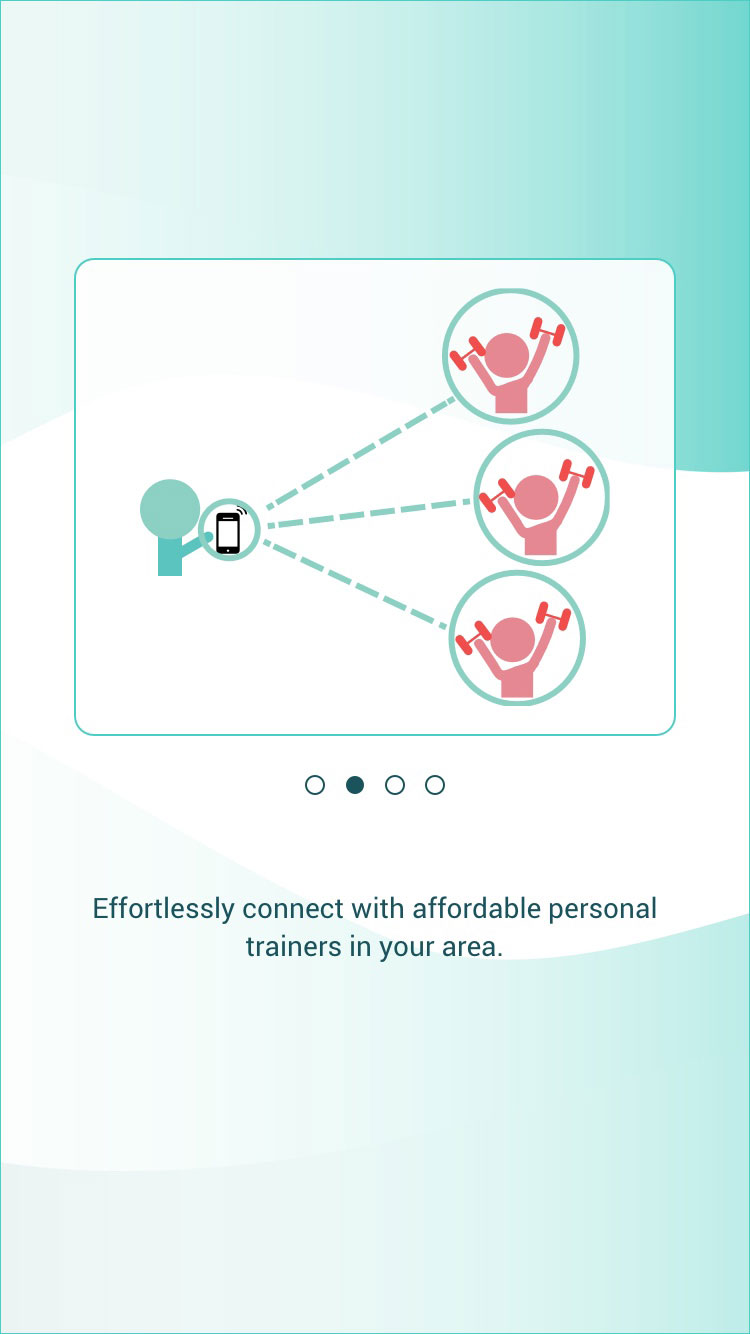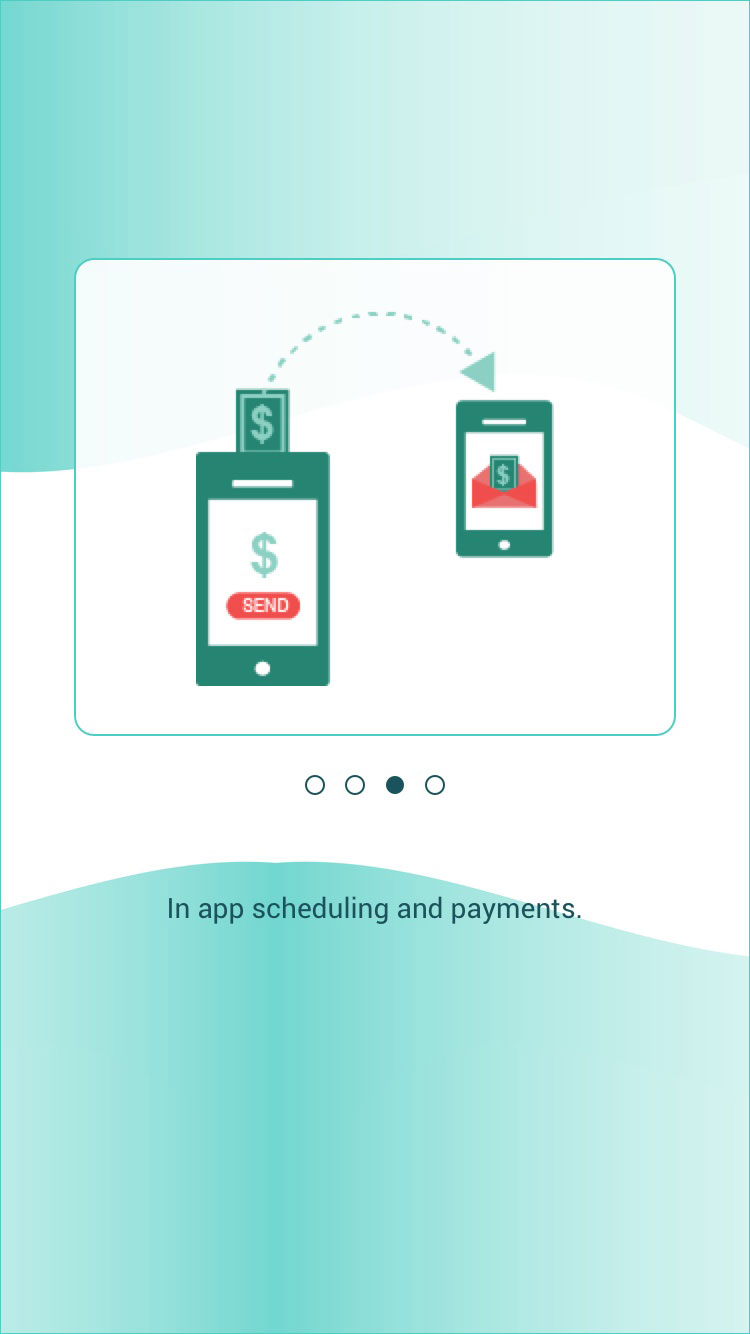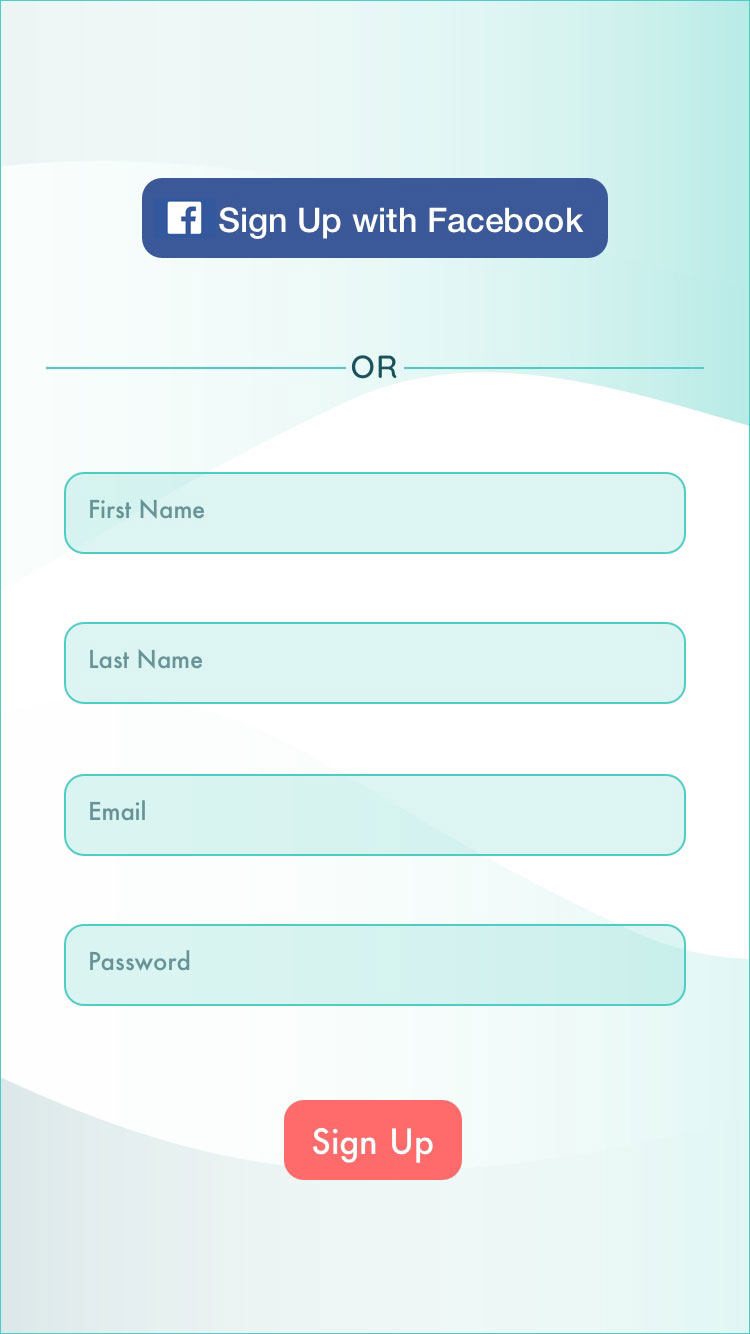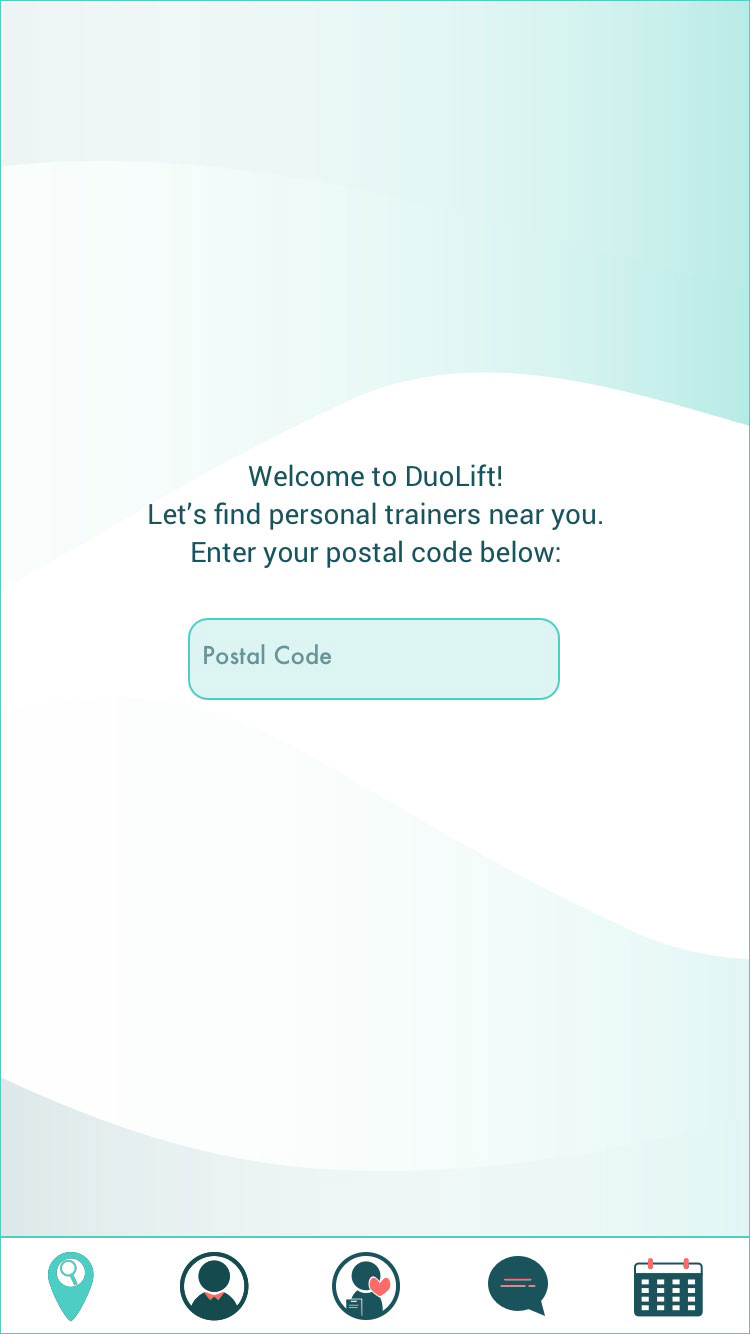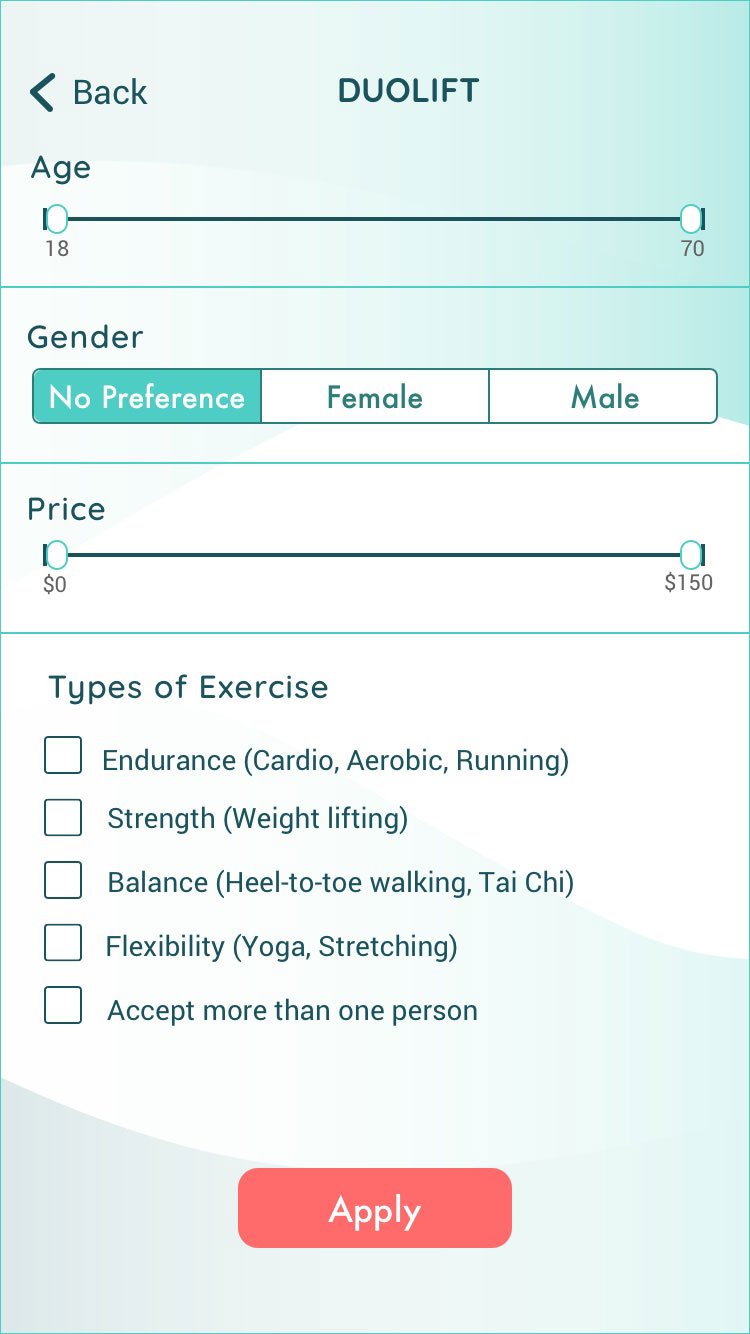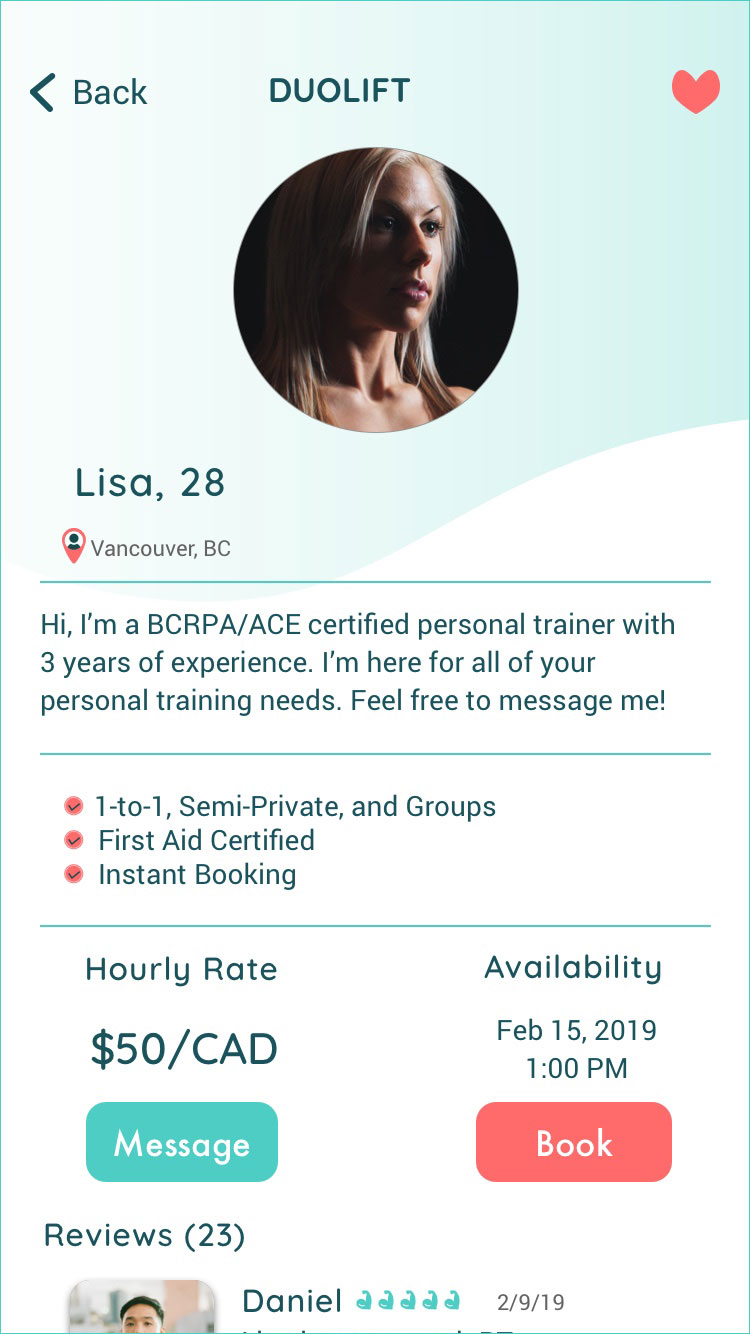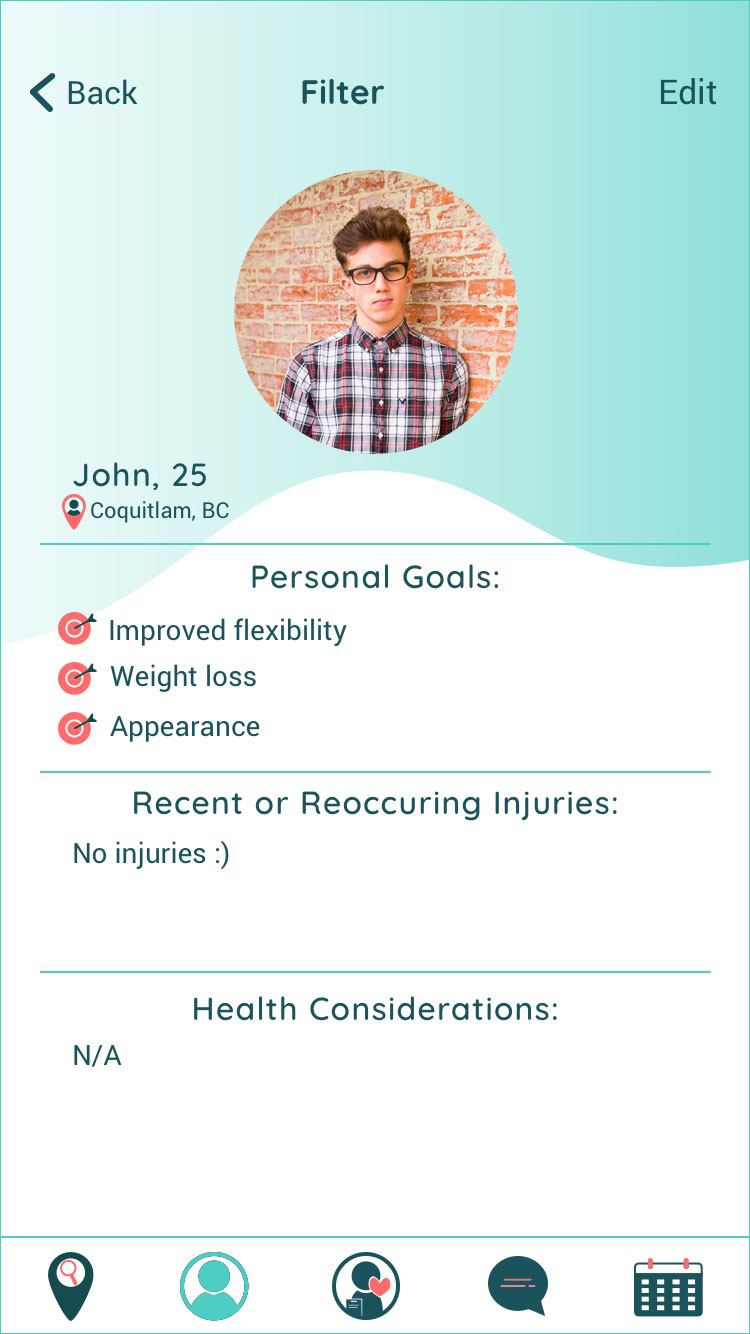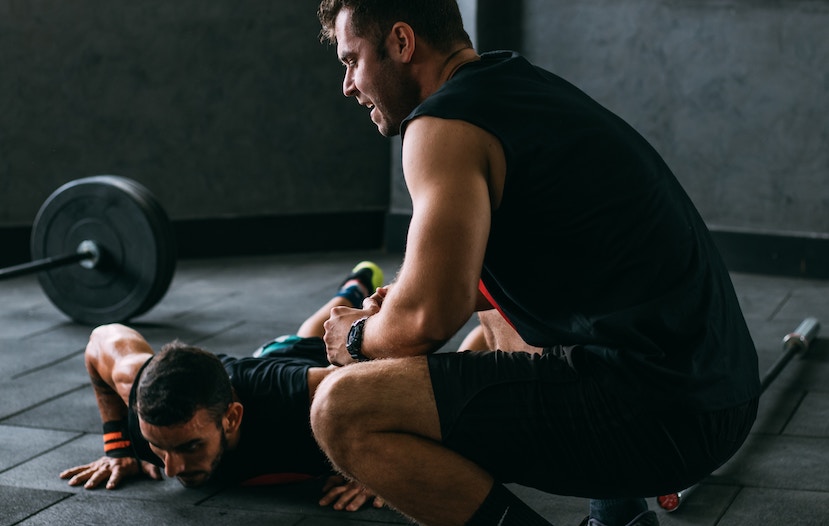
Tools: Sketch, InVision, paper, post-it notes, pens, markers
Team: two UX designers, two UI designers
Table of Contents
The gig economy has transformed the workforce by creating platforms like Uber, Airbnb, DoorDash to help people monetize their skills and services. At a kick-off meeting, our clients introduced an idea they had recently come up with and had presented at the Bright Ideas competition. The idea was to create a platform that enables clients to find and link up with qualified personal trainers regardless of their social or financial status. They called it an Uber for exercisers. They also had a motto that helped us every time we had doubts about our decisions: "Simple. Accessible. Affordable."
After the kick-off meeting, the UX and UI teams gathered together to establish the three main goals for this project. First of all, we agreed on the business goals for the project. It was vital for our clients to have an app that is simple, accessible, and affordable for all users to use as well as one which reaches the local market and, eventually, other markets globally.
Then we came up with the project goal, which was a design for an app for clients and personal trainers to connect.
Lastly, we approached our client's idea from a user's perspective and agreed that exercisers' goals are health and personal training services that are flexible and affordable, and personal trainers' goals are increased exposure, income, and limited or no middleman.
Research
When we established all three goals, it was time for our teams to split up and continue working on our own tasks. The next step for us, the UX team, was to do research on the fitness industry in general, as well as direct competitors.
Our research revealed that there are no direct competitors on the market at the moment, and the idea we were working on was quite unique.
However, there are companies that offer personal training services delivered right to a client's home, condo, gym or workplace.

Companies that offer personal training services in Vancouver
Further analysis of company websites showed that they provided neither information about available instructors who work for them nor information about instructors' qualifications and experience. Furthermore, clients could not choose a personal trainer themselves or change them as many times as they wished.
The next category of competitors we did research on was the actual fitness apps. We chose Nike Training Club and MyFitessPal.

Fitness Apps
These apps are quite popular because they are free, help people start exercising right off the bat and help to overcome the frustration of getting to a gym and not knowing what to do and where to start. However, as good as they are, they cannot replace a real personal trainer: they cannot show you your mistakes, correct your form or motivate you.
Survey
As a part of our research, we deployed a survey for exercisers, gym-goers, and personal trainers, which gave us valuable insights on whether or not people use personal training services, what prevents them from getting a personal trainer as well as what kind of challenges, if any, personal trainers face while providing services. We received 86 responses from exercisers and gym-goers and 16 responses from personal trainers. Here are some key findings from our survey:
- More than 60% of our respondents have had a personal trainer but stopped using their service due to price and inflexibility of time or location.
- The significant amount of people who have used personal training services before but quit because of the high cost would consider hiring a personal trainer again if they were more affordable and flexible location-wise.
- The main goals and motivations for exercising are physical and mental health, appearance, personal goals, and stress relief.
As for personal trainers, one of the questions we had in mind was to understand if they had any problems gaining new clients. Here are some key findings:
- When we asked what challenges they faced as personal trainers, 31.3% of our respondents chose 'retaining clients' as their answer, 56% responded with 'gaining clients', and 18.8% of respondents chose 'collecting payments'.
- 56.3% of personal trainers said that they were not satisfied with the number of clients they had and working on getting more. As well, 40% of trainers wanted to work more hours.
- In addition, 80% of trainers had to pay a fee to a gym they're affiliated with; 50% of them didn't consider that fee fair.
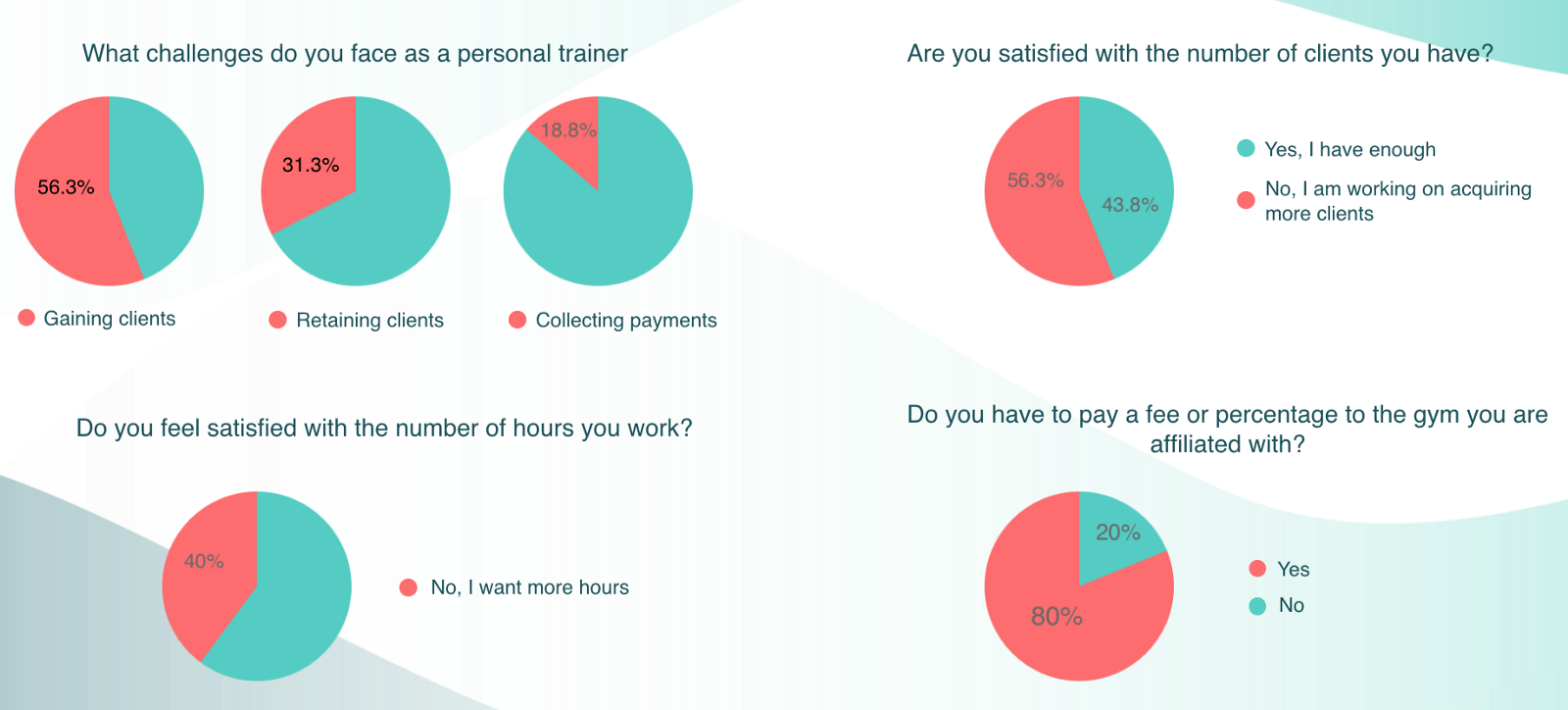
Personal trainers survey findings
We received valuable ideas on what kind of information personal trainers would like to know about their clients before the first session. We used this information later when we worked on designing the client side of the app.

Affinity Diagrams and User Personas
When we collected all the data we needed, we organized it in a way that helped us to build user personas. Analyzing the data on exercisers and gym-goers, we concluded that:
- Our main target audience is exercisers who are between 20 and 29 years old.
- Some of the respondents have had a personal trainer before.
- They need some help with their technique.
- They are ready to pay between $40 and $60 per session.

Client Affinity Diagram
We repeated the same process of organizing the data for personal trainers as well. Here are some key findings:
- Most of our respondents work less than 20 hours per week. Some of them work from 20 to 30 hours per week.
- Personal training is not their primary source of income.
- Most of them advertise themselves through word of mouth and on social media.
- When it comes to money, most PTs charge from $21 to $39 per hour, accept cash, credit or debit cards.
- The main challenges trainers face are gaining and retaining clients, collecting payments, and paying a fee to the affiliated gym.
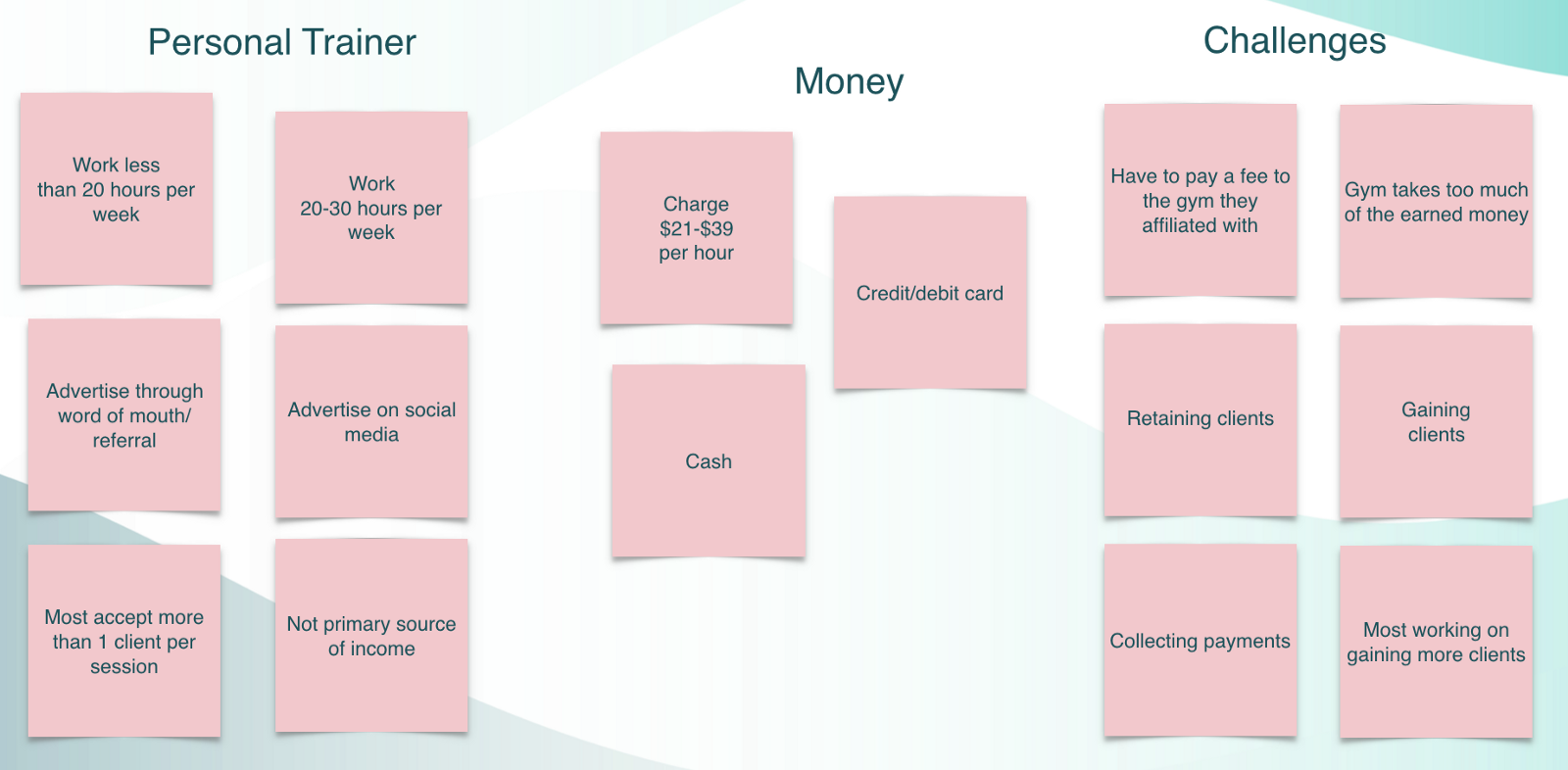
Personal Trainer Affinity Diagram
Based on our conclusions, we created two user personas.
Please meet John. He is a 25 year old young professional who uses workouts to relieve stress from work. He stopped using a personal trainer because of the high cost but was really impressed by the results he achieved when he had one.

Client User Persona
Besides John, we came up with the second User Persona for a personal trainer. Please meet Lisa. She works part-time at a restaurant and as a personal trainer. Lisa struggles to gain new clients and organize her day in a more efficient way.

Personal Trainer User Persona
Design
When we had our user personas ready, we created a user flow that reflected the steps John needed to take to register in the app, find a personal trainer and book a session.
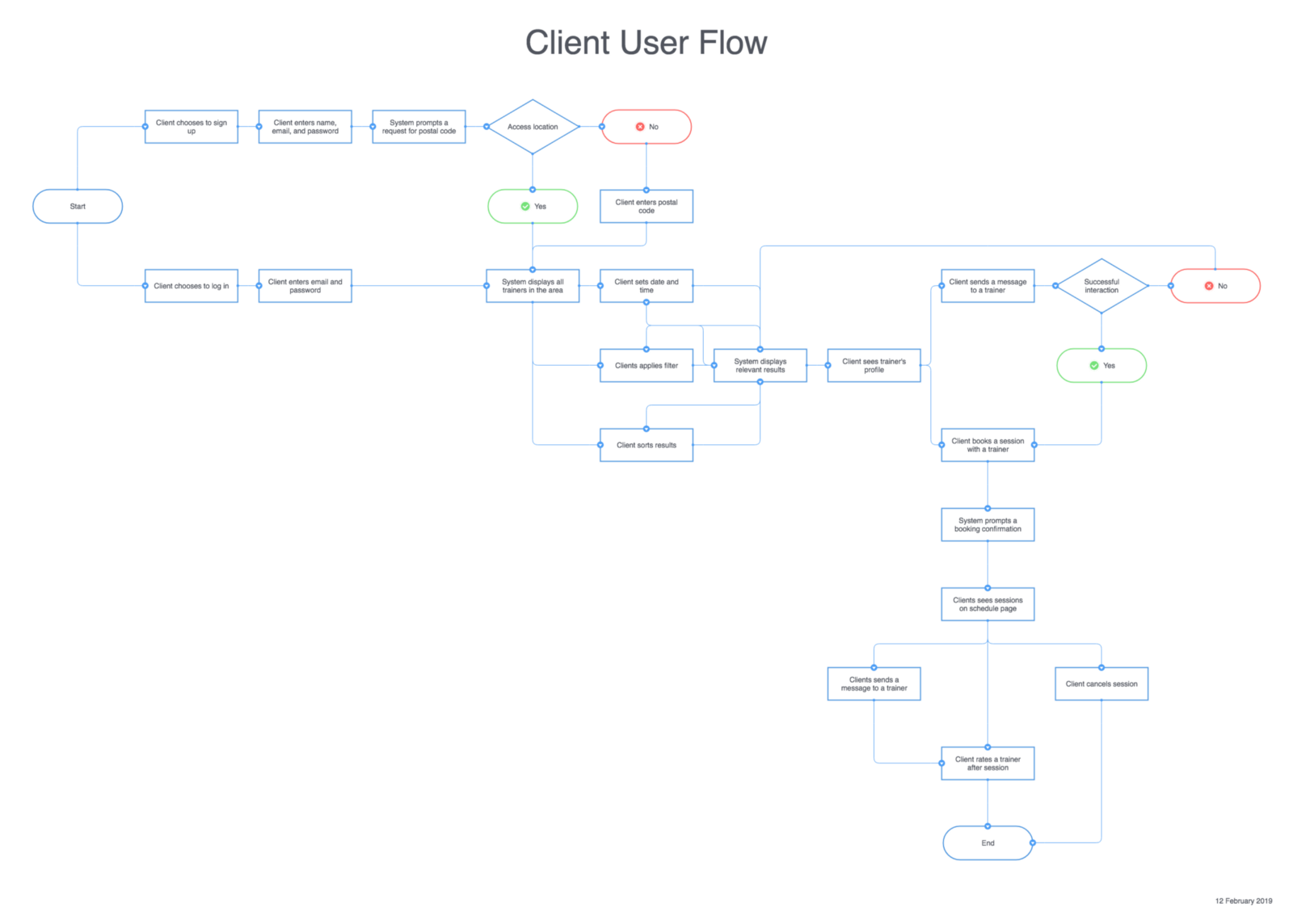
User Flow
After that, we devoted some individual time to think about what some of the screens might look like and then came back together to discuss our choices and come up with the best-unified version of the screens. Based on that, we started creating low-fidelity paper prototypes.

Design Studio

Paper Prototypes
Testing
We tested our paper prototypes on three people and mid-fidelity wireframes on two people. We asked our users to perform the following tasks:
- Join as a client.
- Filter Date and Time for February 15 at 1:00 pm.
- Look for a personal trainer that is Female and Under $45 by changing Filters.
- Click on Personal Trainer profile.
- Message the Personal Trainer that you are interested in.
- Book your session with the Personal Trainer
- View your schedule.
Overall, the feedback we received from the testers was very positive. There was no confusion on how to navigate the app.
We also faced a dilemma that needed to be tested - the onboarding process for our clients. On the one hand, our main idea was to allow users to see what the app is all about and use the core functionality - searching for personal trainers and viewing their profiles - right away. We wanted to save our users' time on the onboarding process by allowing them to skip some steps and finish them later. However, as soon as they decided to book a session with a personal trainer for the first time, we would ask them to complete their profile by providing date of birth, goals, and additional information in order to proceed with the app. On the other hand, there was an option of onboarding clients at the very beginning and allowing the full access to all the features right after that.
The results of testing showed that one third of our testers did not mind giving all the necessary information at the very beginning as they got used to this practice with some other apps. And two thirds of the testers preferred to try the app first and finish the onboarding process later. Based on that, we decided to go with the two-step onboarding.
Future Considerations
Considering the time we were given for this project, we were not able to design all the features we had in mind.
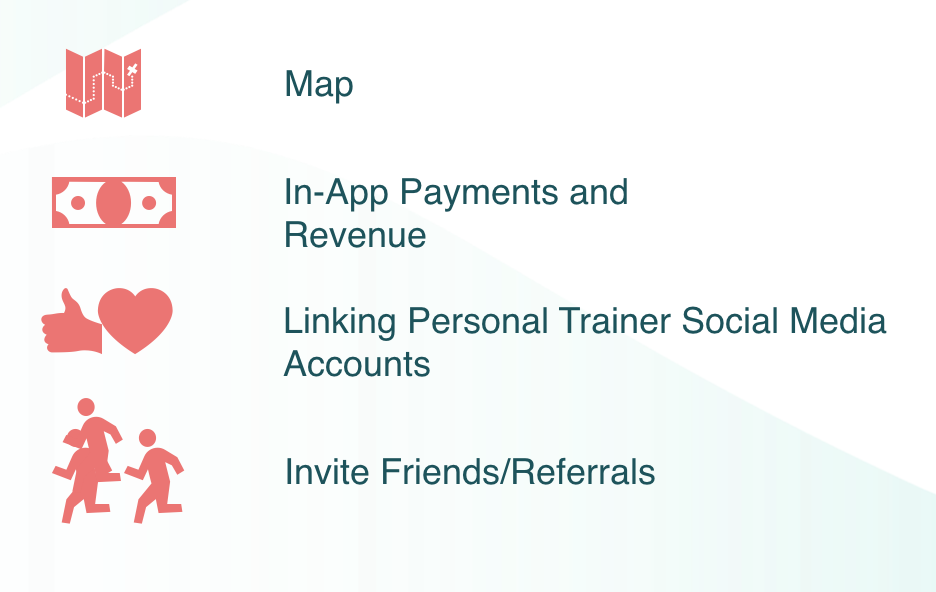
We asked our clients to consider adding the following to the app:
- A map that shows a session location as well as all the community centres, parks, and small private gyms in the chosen area.
- A payment process between trainers and clients.
- As our survey showed, a lot of personal trainers use social media to advertise themselves. Adding the option of linking their social media accounts to the DuoLift profiles could be beneficial for their businesses.
- Based on our research, people like to exercise with friends. At the same time, personal trainers work not only with individuals but with small groups as well. Inviting a friend to a session would benefit both groups of users.
- The last thing I would like to include in the future considerations list is my own idea of adding an emotional touch to the app. A lot of people struggle with exercising. And sometimes the hardest part is not exercising itself but setting an intention and actually getting to a gym. Some of us might be full of determination to go to a gym when we're booking a session. But when the time comes, our brain finds many ways to talk us out of this 'unnecessary waste of time'. At the same time, most people agree that after a workout session is done, we feel energized, strong, and proud of ourselves. I believe this is the perfect moment to cheer someone up and help them to get to the same state of fulfillment and confidence. I wanted to create not just an app, but a community of DuoLifters where personal trainers and clients can write a sentence or two in order to cheer others up, and anyone who could use a bit of encouragement can read it and feel inspired and supported.
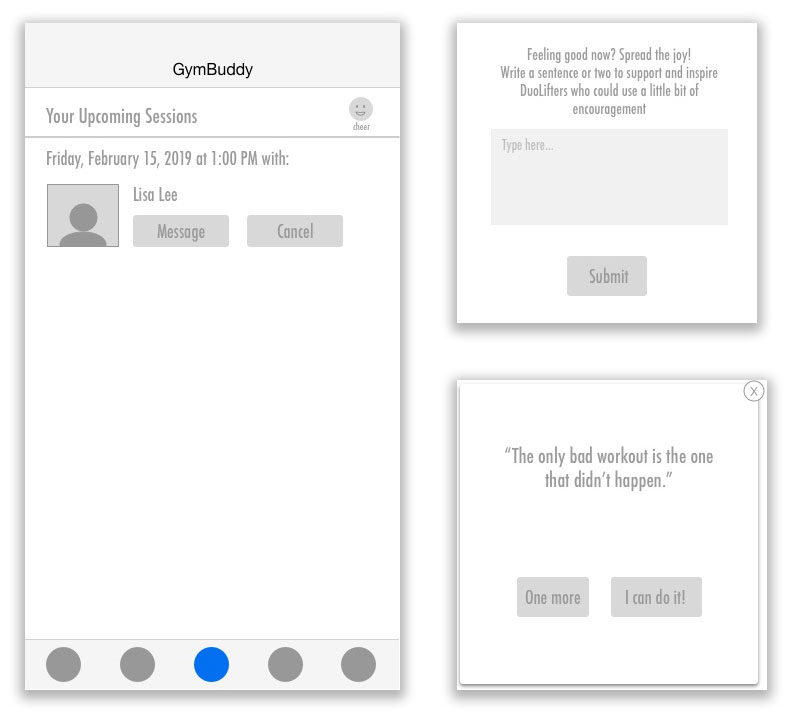
Final Prototypes
Here is the link to the mid-fidelity prototypes.
Our awesome UI team designed a new logo and beautified the mid-fi wireframes. Below is the Hi-fi for the app screens.

